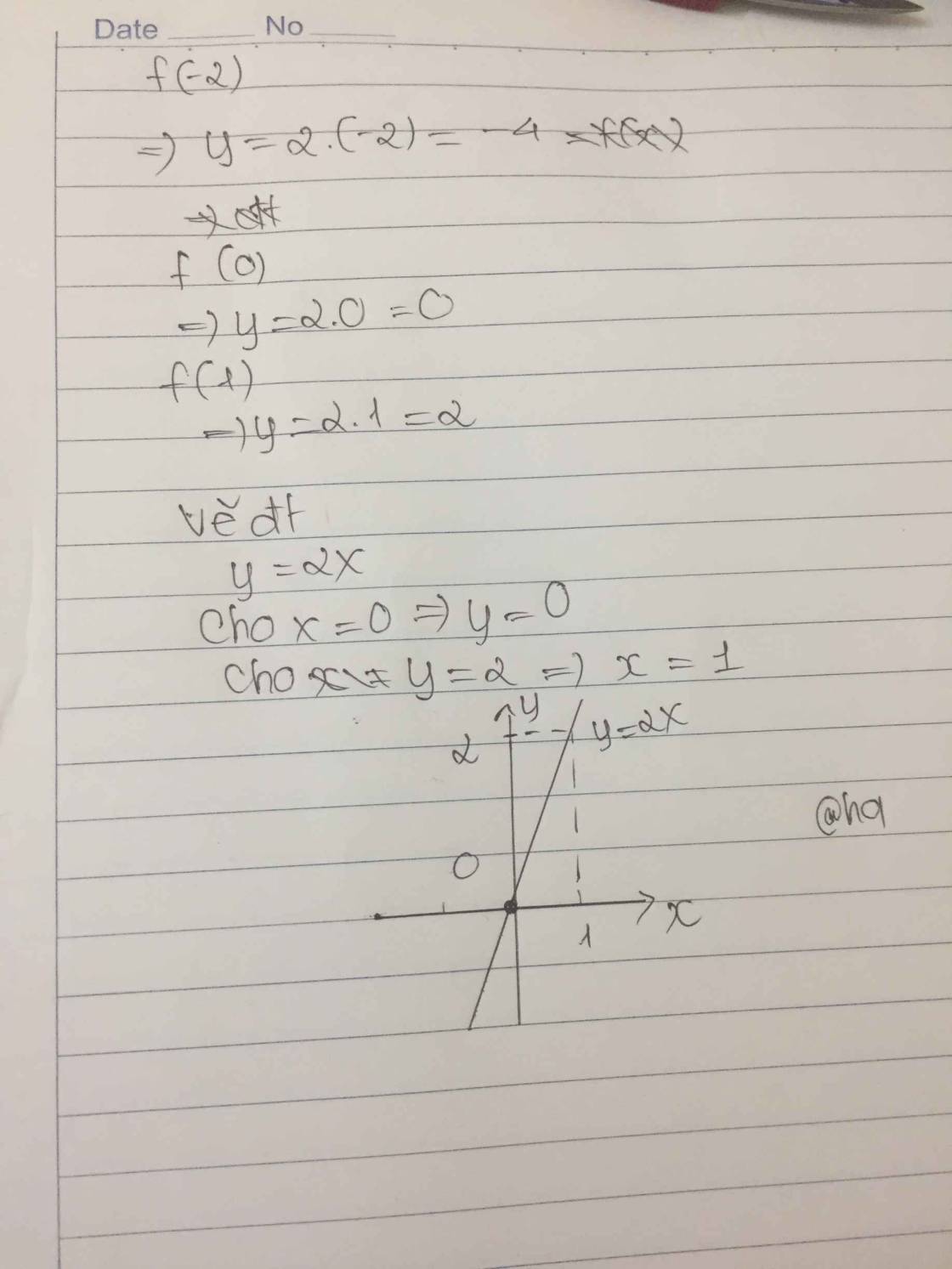
Hãy nhập câu hỏi của bạn vào đây, nếu là tài khoản VIP, bạn sẽ được ưu tiên trả lời.


f(0) = 1/2.0 + 5 = 5
f(2) = 1/2.2 + 5 = 6
f(3) = 1/2.3 + 5 = 13/2
f(-2) = 1/2.(-2) + 5 = 4
f(-10) = 1/2.(-10) + 5 = 0

f(0) = 1/2.0 + 5 = 5
f(2) = 1/2.2 + 5 = 6
f(3) = 1/2.3 + 5 = 13/2
f(-2) = 1/2.(-2) + 5 = 4
f(-10) = 1/2.(-10) + 5 = 0

Câu 1:
a)
| \(y=f\left(x\right)=2x^2\) | -5 | -3 | 0 | 3 | 5 |
| f(x) | 50 | 18 | 0 | 18 | 50 |
b) Ta có: f(x)=8
\(\Leftrightarrow2x^2=8\)
\(\Leftrightarrow x^2=4\)
hay \(x\in\left\{2;-2\right\}\)
Vậy: Để f(x)=8 thì \(x\in\left\{2;-2\right\}\)
Ta có: \(f\left(x\right)=6-4\sqrt{2}\)
\(\Leftrightarrow2x^2=6-4\sqrt{2}\)
\(\Leftrightarrow x^2=3-2\sqrt{2}\)
\(\Leftrightarrow x=\sqrt{3-2\sqrt{2}}\)
hay \(x=\sqrt{2}-1\)
Vậy: Để \(f\left(x\right)=6-4\sqrt{2}\) thì \(x=\sqrt{2}-1\)



\(f\left(2\right)=2.2+3=7\)
\(f\left(-3\right)=2.-3+3=-3\)
\(f\left(6\right)=2.6+3=15\)
study well
thay x=2 vào hàm số ta có
f(2)=2.2+3=4+3=7
vậy f(2)=7
thay f(-3) vào hàm số ta có
f(-3)=2.(-3)+3=-6+3=-3
vậy f(-3)=-3
thay x=6 vào hàm số ta có
f(6)=2.6+3=12+3=15
vậy f(6)=15
đúng tk cho mik

f(0)=2.0-5=-5
f(2)=2.2-5=-1
f(-3)=2.(-3)-5=-11
y=f(0)=2*0-5=-5
y=f(2)=2*2-5=-1
y=f(0)=2*(-3)-5=-11